The subtle grass-like sedges of Carex are perfect for adding texture and beauty in challenging and shady spots in the garden. The species, although not remarkably showy, are invaluable for creating low-maintenance and resilient landscapes and gardens under challenging conditions.
What is Carex?
The genus Carex includes more than 2,000 species, belonging to the Cyperaceae family. These species are widespread throughout temperate ecosystems and are found in many habitats, such as moist and dry forests, prairies, ditches, coastal dunes and wetlands.
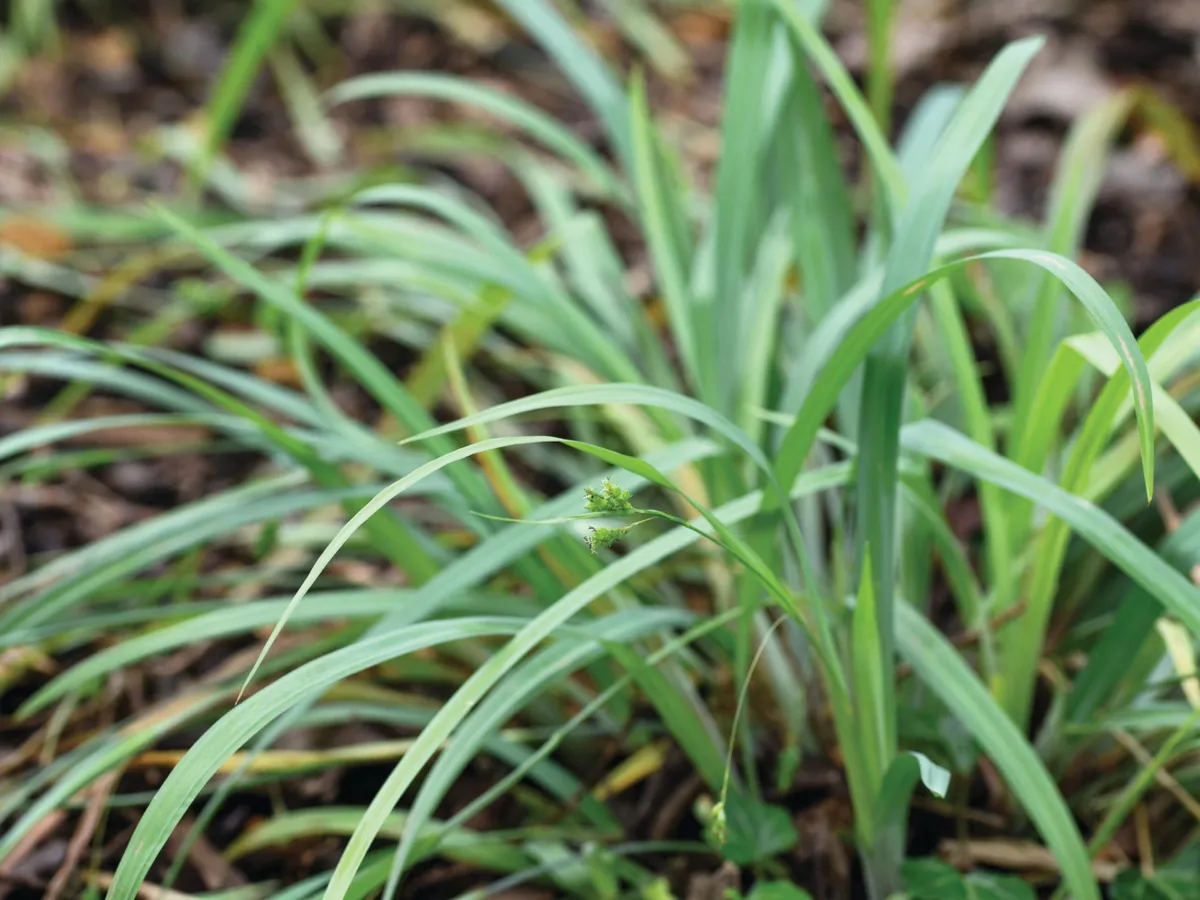
Commonly known as sedges, they are distinguished from grasses, which belong to the Poaceae family, and rushes, which belong to the Juncaceae family, by their triangular and solid stems. There are other minor differences, but the rhyme ‘sedges have edges, rushes are round, grasses have nodes all the way to the ground’ is a useful way to remember the key distinguishing features. Their flowers are generally small, green or brown, and emerge above the foliage in spring, but often go unnoticed by most of us.
You may also like
- How to cut back ornamental grasses
- 16 garden border ideas
- The best ornamental grasses to grow
- How to create a mixed border
Many Carex species form neat clumps of fine to broad leaves. They can suppress weeds and are often wellbehaved, meaning they rarely overwhelm their neighbours, and can easily intermingle with perennials and ferns. Some sedges are also the perfect groundcover plants for dry and shady slopes or around shrubs and trees.
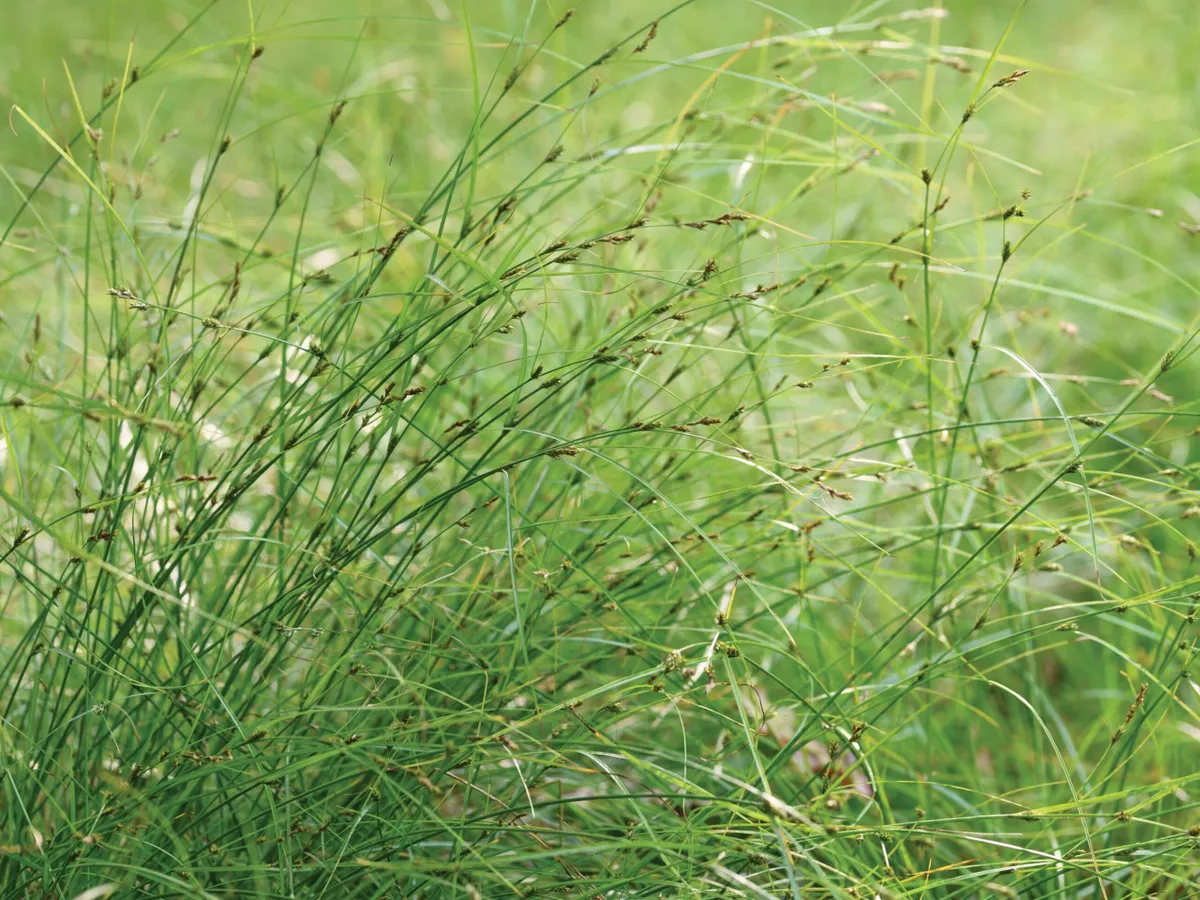
Jump to
- How to care for Carex
- How to divide Carex
- When to plant Carex
- Where to plant Carex
- How to trim Carex
- How tall does Carex get?
- The best Carex to grow
- Where to buy and see Carex
How to care for Carex
When to divide Carex
To propagate, Carex, like other cool-season grasses and grass-like plants, are best divided in early spring as they come into growth. Carex, especially the clump-forming species, rarely require dividing.
Alternatively, seeds germinate after a couple of months of moist stratification. They can be sown outside in autumn, allowing the cold weather to vernalise them naturally. The tiny seeds can also be sown in spring after being kept in moist, sand-vermiculite in the fridge over winter. The seeds need to be sown superficially, no deeper than the seed’s width.
Where to plant Carex
Carex are best grown in moist and water-retentive soil in part-shade locations. It is imperative you plant them in the right habitat, matching the environmental conditions where these species originate. Lowland species require constant moisture, while upland species need good drainage; otherwise, they will fail.
There is considerable variation among the species, but they generally tend to perform best in friable, sandy, loamy and not-too-dry soils. Unless the soil is particularly poor, there is no need for additional feeding.
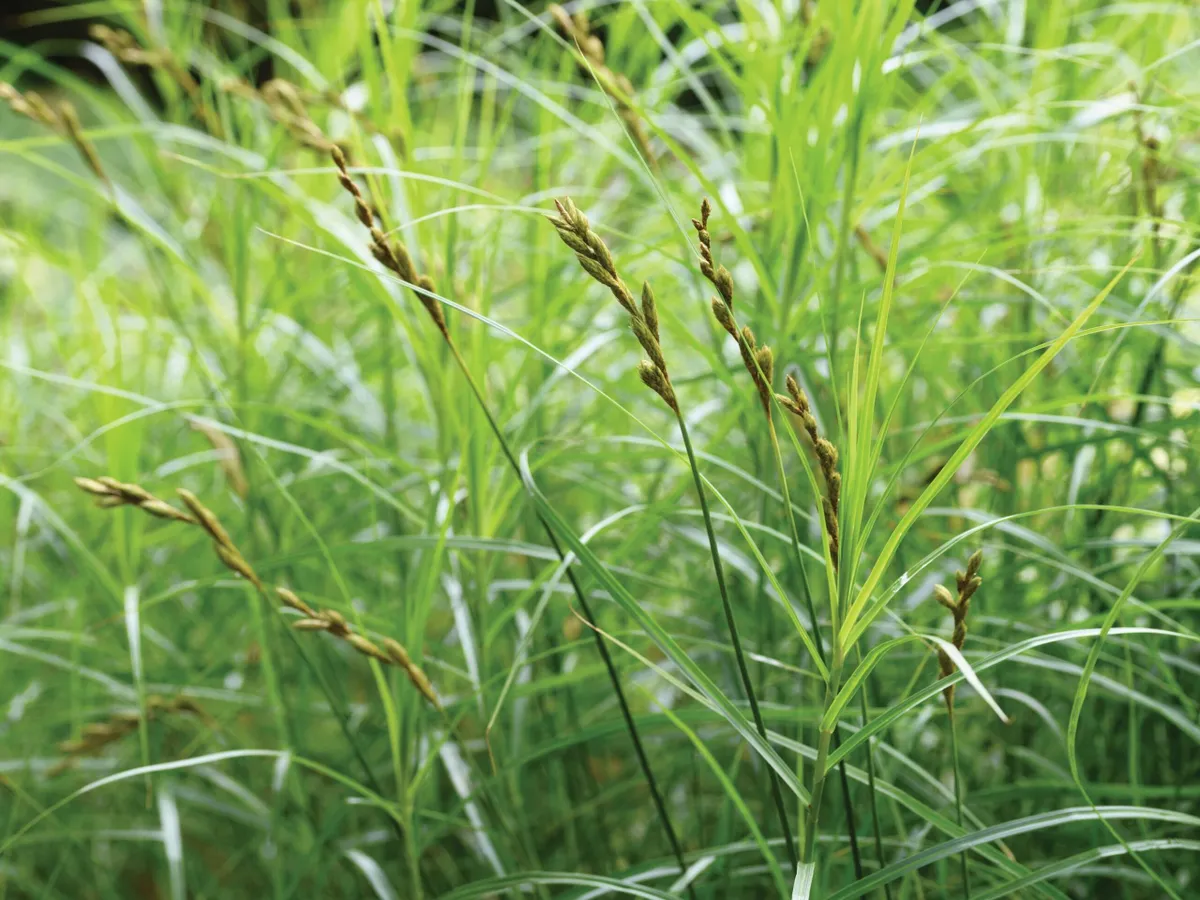
Mulching after planting with wellrotted leafmould or compost can improve the soil structure, suppress spontaneous vegetation and increase the soil’s water-retention capacity, aiding plant establishment. You can apply a 3-5cm layer of such loose organic material annually in spring around the plants.
When to plant Carex
Cool-season grasses and grass-like plants, such as Carex, are best planted in spring or autumn when the temperatures are lower and they are actively growing. Growth slows down in the heat of the summer, so it is best to avoid this period. In colder climates, sedges are best planted in spring so they have enough time to get established before winter.
How to trim Carex grass
Carex are low-maintenance, undemanding plants. Evergreen species can be brushed with a rake in spring to remove dead leaves. Evergreen species with fine leaves, such as Carex remota or Carex divulsa, benefit from a yearly cut in spring to keep the crown neat and full. However, this cut should never be done at soil level, but at least 15cm high to avoid the risk of killing them. All deciduous or semi-deciduous species, such as Carex grayi with its showy starburst-like seedheads, or North American species Carex laxiculmis, Carex muskingumensis and Carex stricta, can be cut to ground level in the spring before they start growing.
How tall does Carex grass get?
Carex grass can grow between 10 inches to more than 3 feet tall, making it an ideal perennial grass to include in garden borders to add depth and height.
The best Carex grass varieties
Carex Pendula
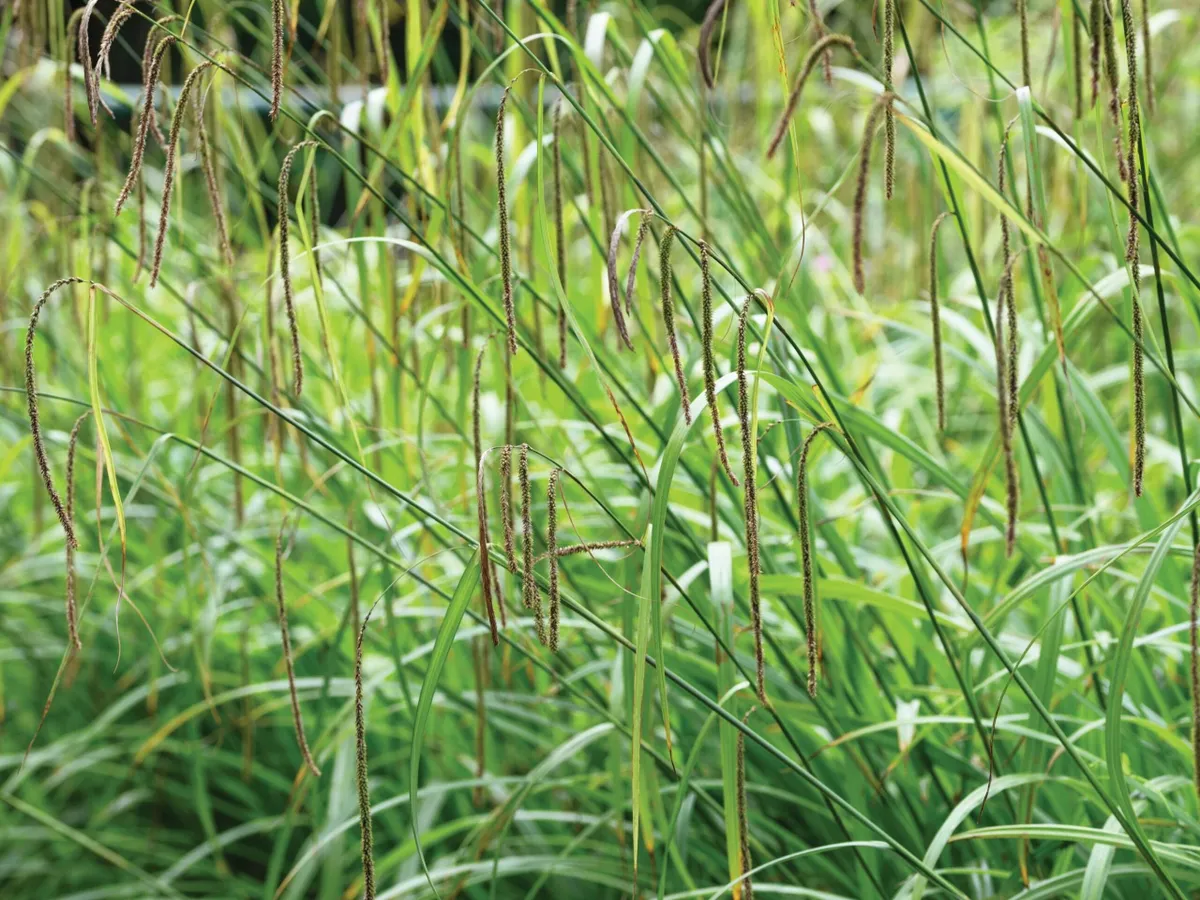
A relatively large, evergreen species with pendulous seedheads and coarse foliage. Native to the UK, this robust species grows in woodland to woodland-edge habitats with various soil conditions. It self-seeds vigorously and is best used in rural settings. 1-1.5m x 1.2m.
Carex oshimensis ‘Evergold’
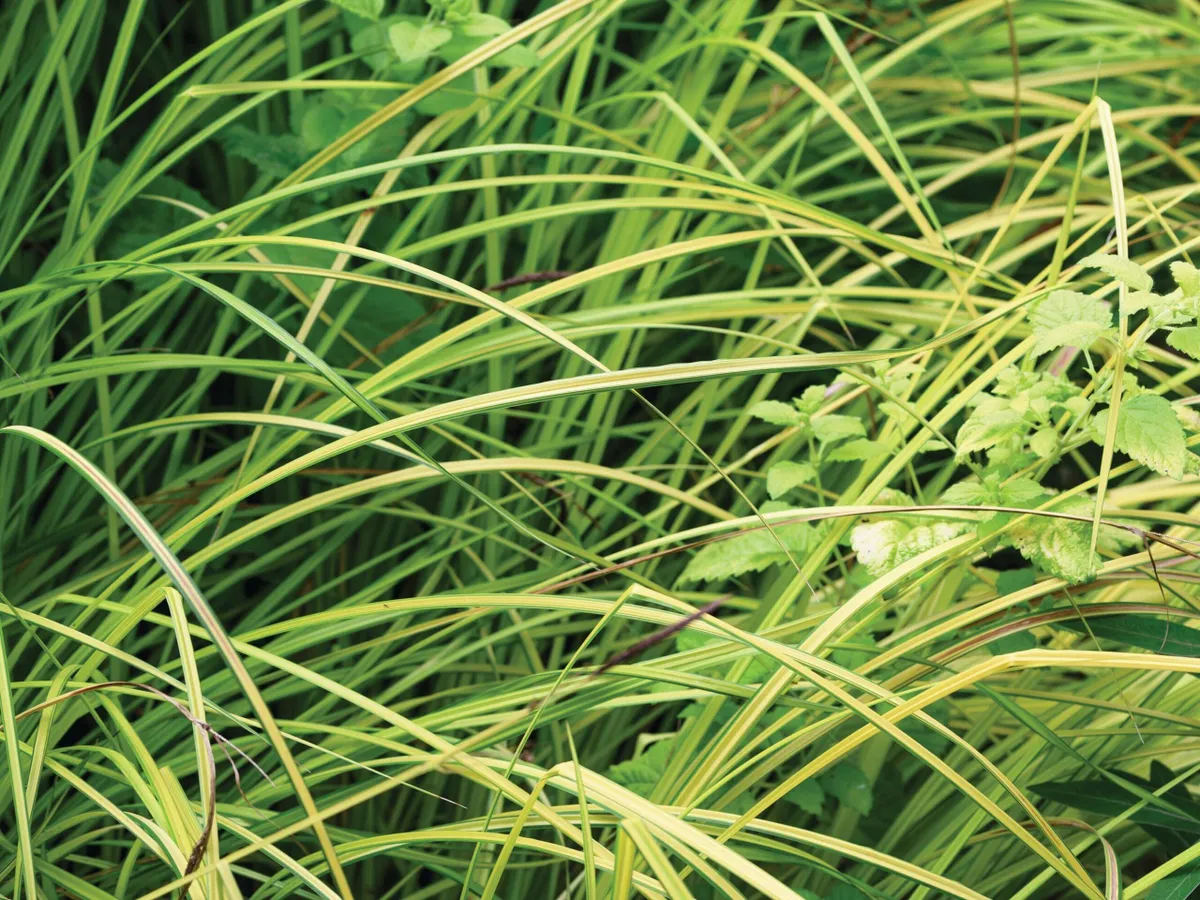
This evergreen cultivar has a clumping habit with gold variegated leaves. The species is from the Japanese island of Honshu, but this cultivar was selected by FitzGerald Nurseries in
Ireland. 30cm x 60cm.
Carex comans bronze-leaved
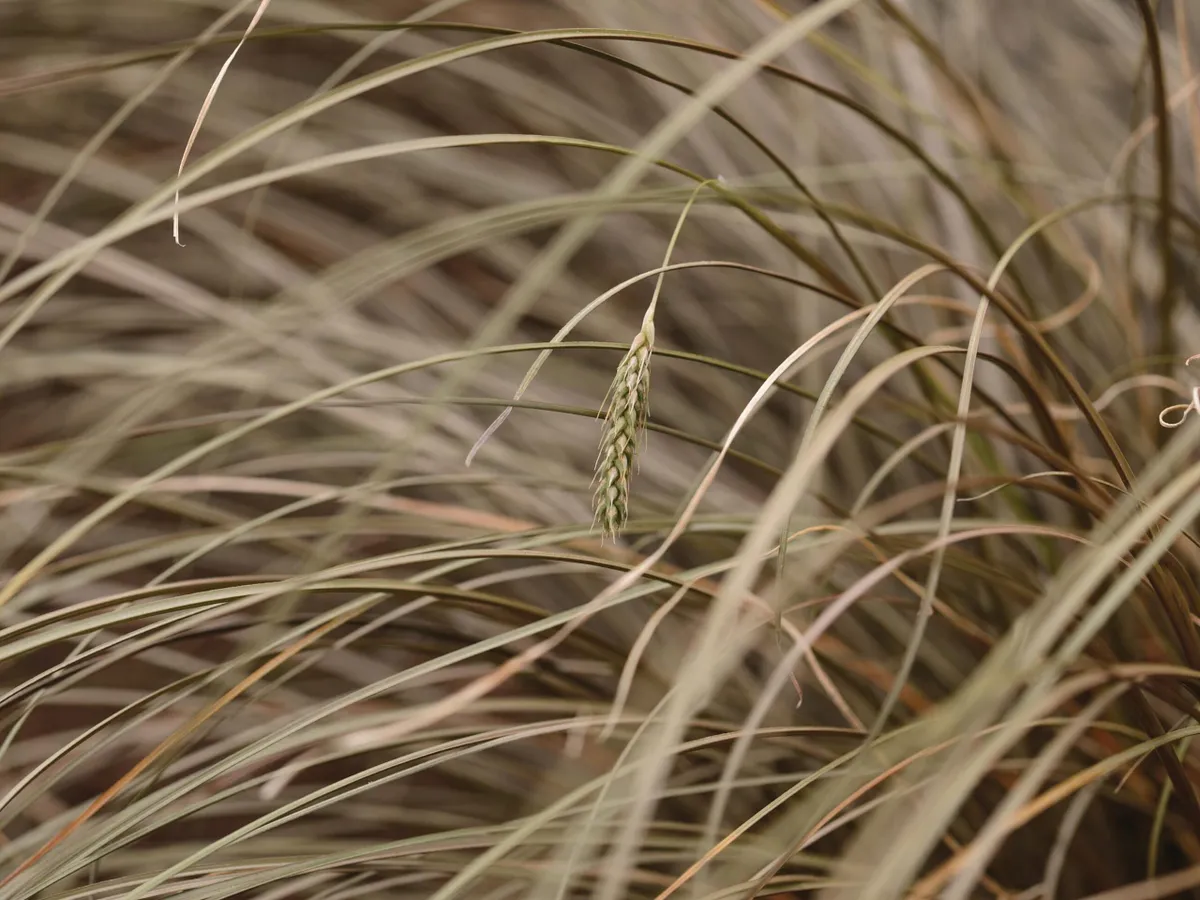
Has fine, evergreen, cascading leaves and forms elegant mounds of bronze vegetation. Carex comans thrives best in full sun or very light shade in freedraining but constantly moist soils. 60cm x 60cm.
Carex buchananii ‘Red Rooster’
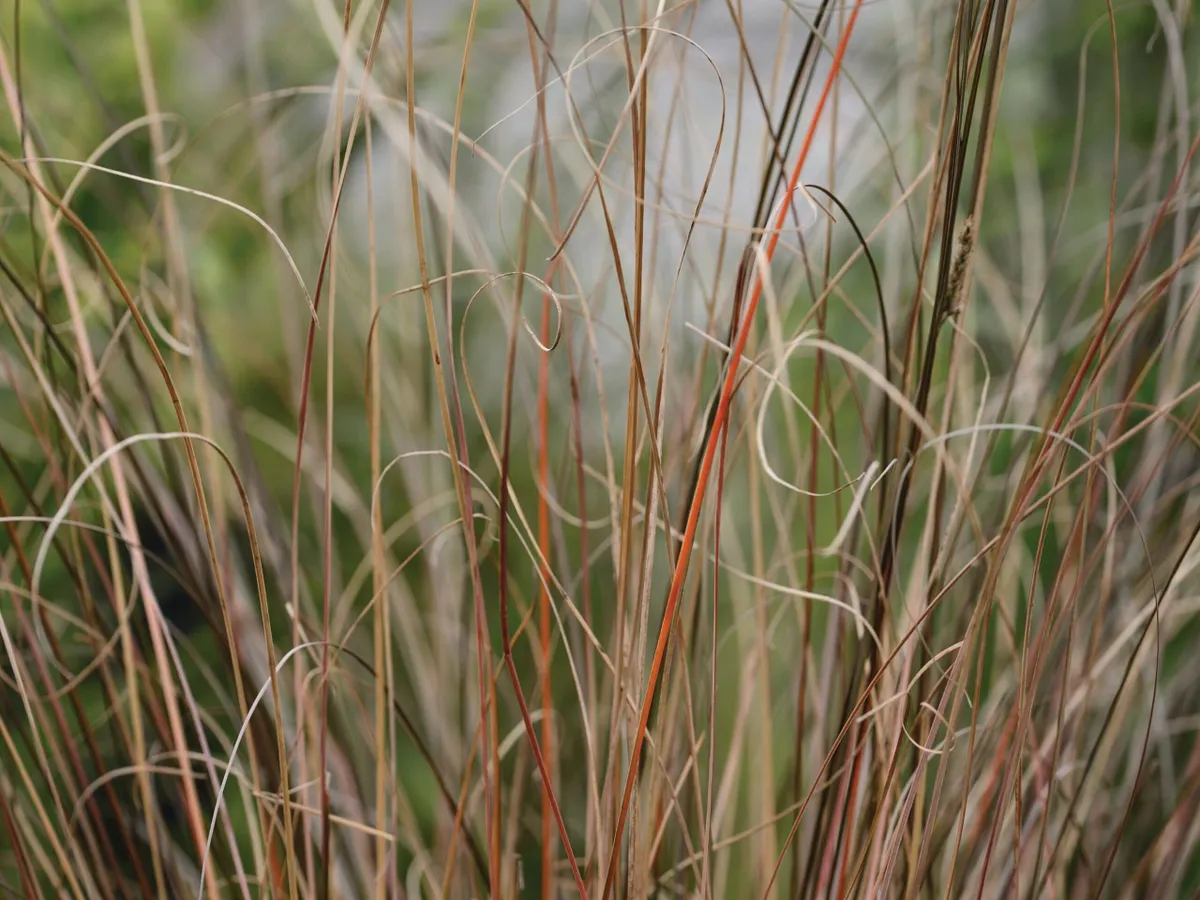
An evergreen cultivar with fine, bronze foliage and a bunching, upright habit.
It is best grown in moist conditions in full sun. The species is found in
well-drained terrain. Height and spread: 60cm x 60cm.
Carex muskingumensis

A North American native sedge with semi-evergreen, palm-like foliage. The species spreads via rhizomes. It is indigenous to wooded lowlands and shaded wet sites such as swamps and river floodplains. 60cm x 60cm.
Carex divulsa
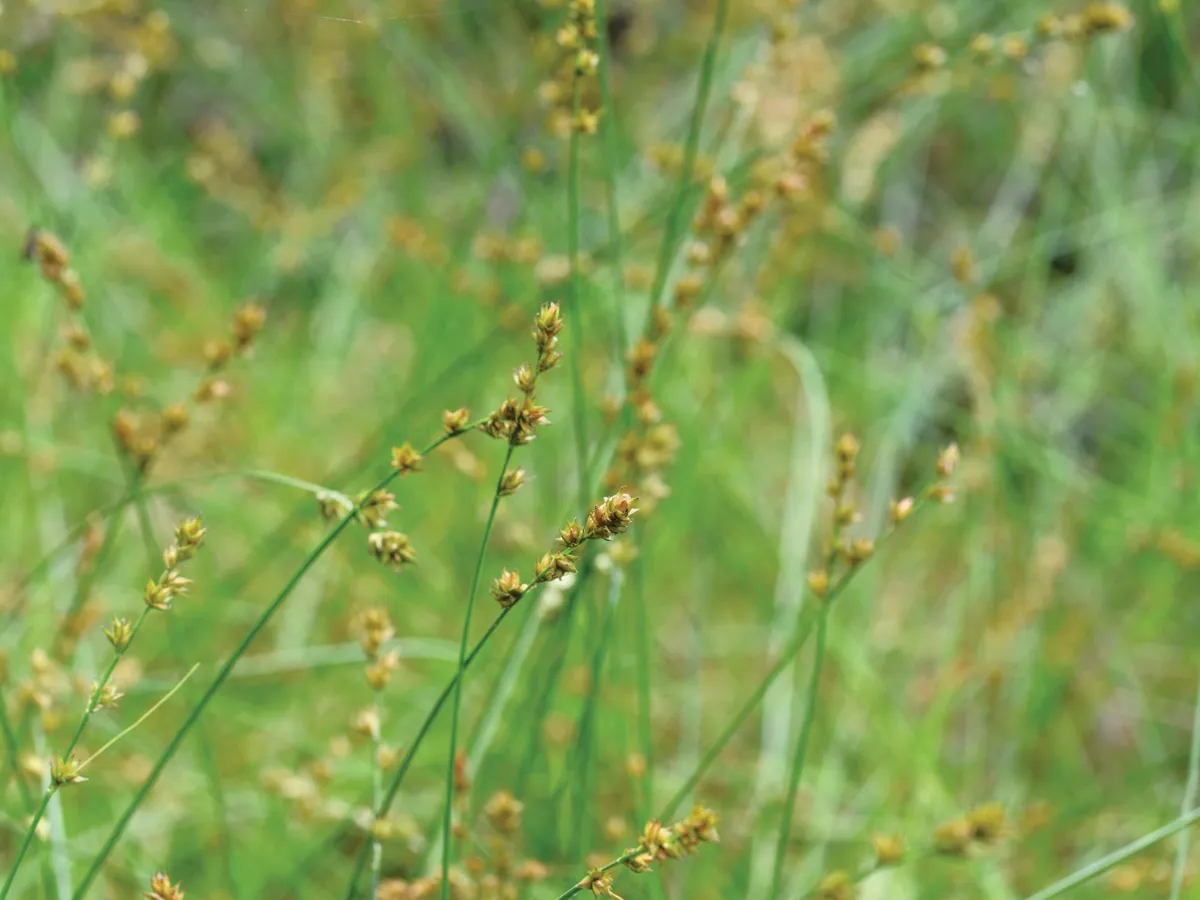
A fine-leaved, clumping, evergreen sedge. Best in moist and moderately dry grounds in part to full shade. In sunny conditions, it requires more moisture. Perfect for intermingling with perennials and ferns in shaded areas. 1m x 1m.
Carex paniculata
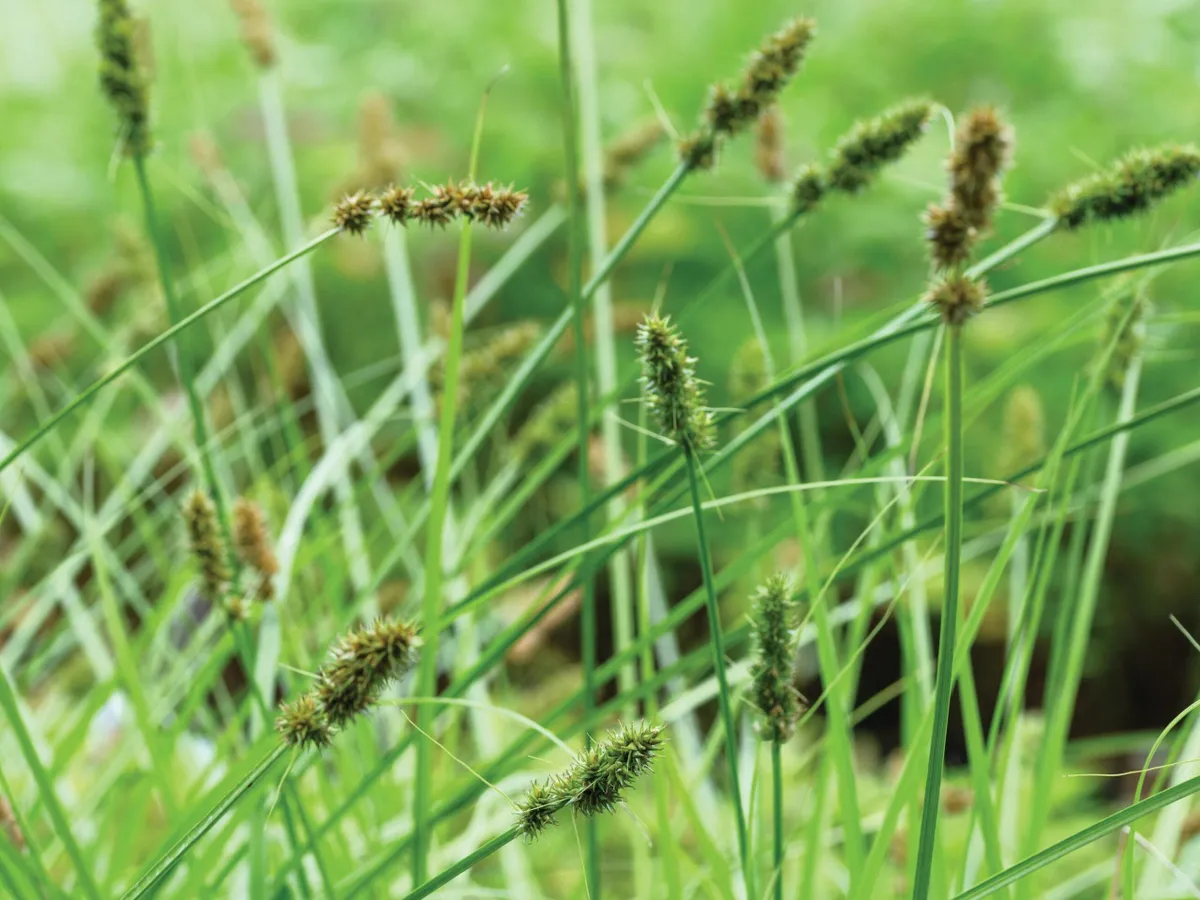
A large sedge, forming tall mounds of fine to medium, dark-green, semievergreen leaves. It is found in the wild across Europe and into North Africa in moist habitats and bogs – a robust species with a wild character for pond margins and countryside estates. 1m x 1m.
Carex laxiculmis ‘Bunny Blue’

Also sold as Carex Laxiculmis ‘Hobb’, this small North American clumping sedge with broad, semi-evergreen glaucous foliage originates in moist woodlands and on riverbanks. 30cm x 30cm.
Carex arenaria
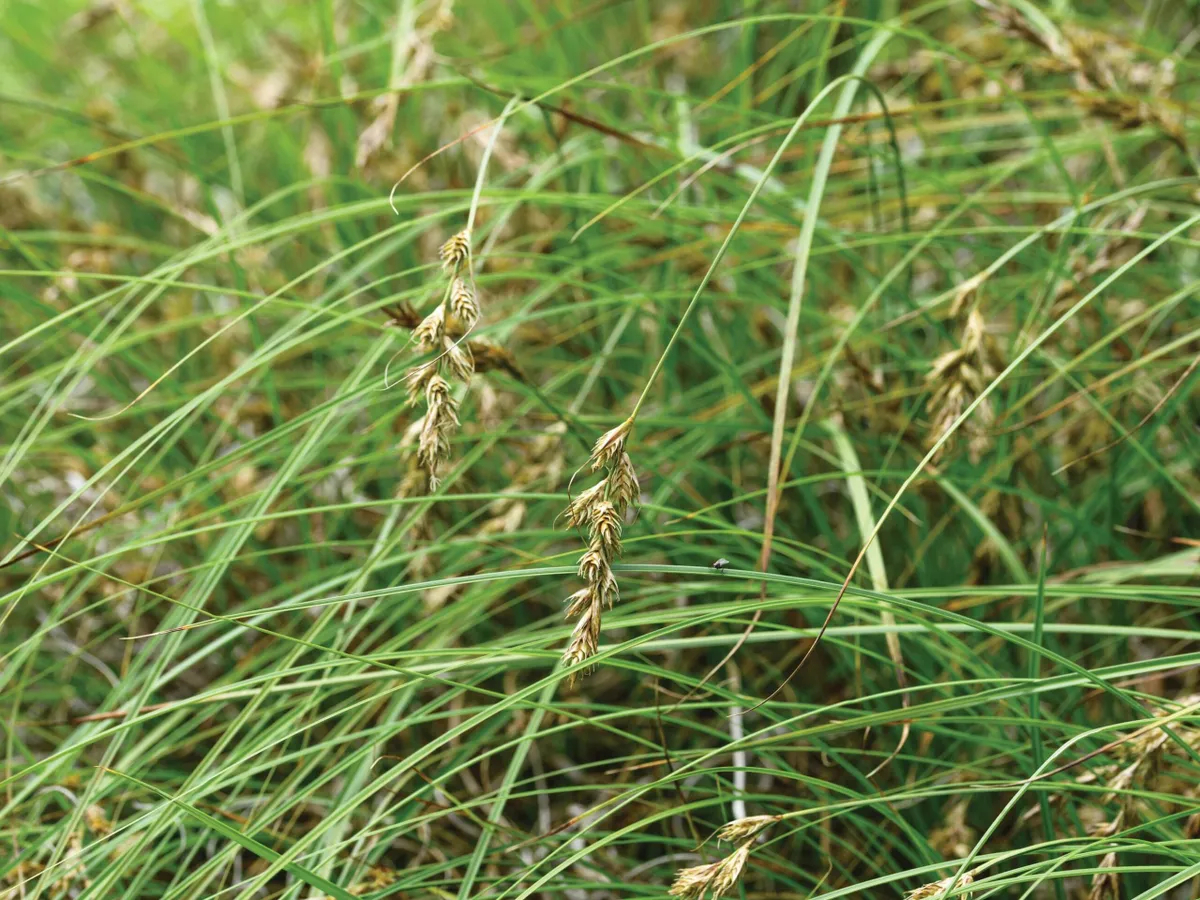
The sand sedge is an important species in stabilising dunes with its spreading rhizomes. It can be found in maritime environments across western Europe and central Russia. 30cm x 45cm
Carex oshimensis ‘Everillo’
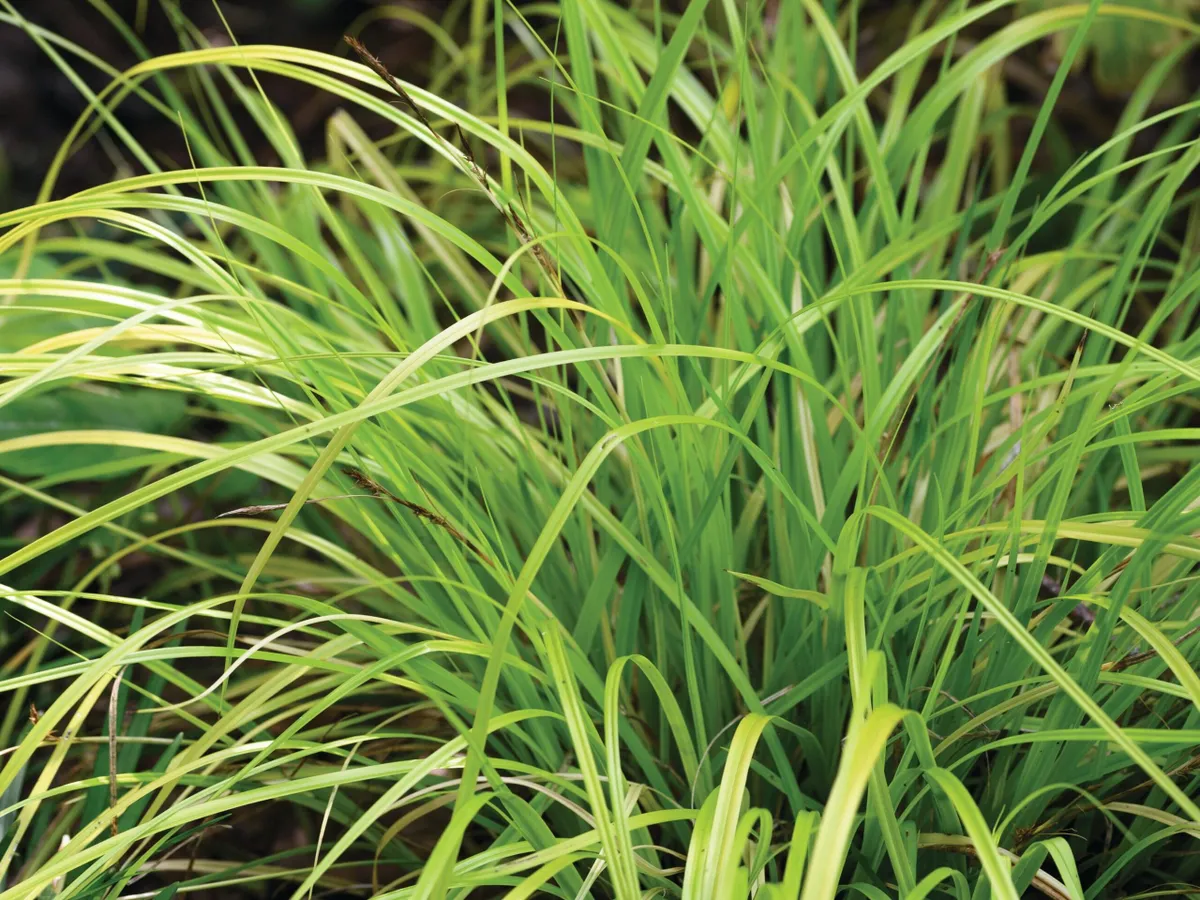
An evergreen plant with lime-green arching leaves. This cultivar was selected by FitzGerald Nurseries in Ireland. Easily grown in medium to moist soils in dappled shade. 30-60m x 60cm.
Carex flacca

Known as the blue green sedge, this is a fine, greyleaved, mat-like evergreen species from southern Europe and North Africa. It thrives in dry shade or part-shade locations.
30cm x 30cm.
Carex elata ‘Aurea’
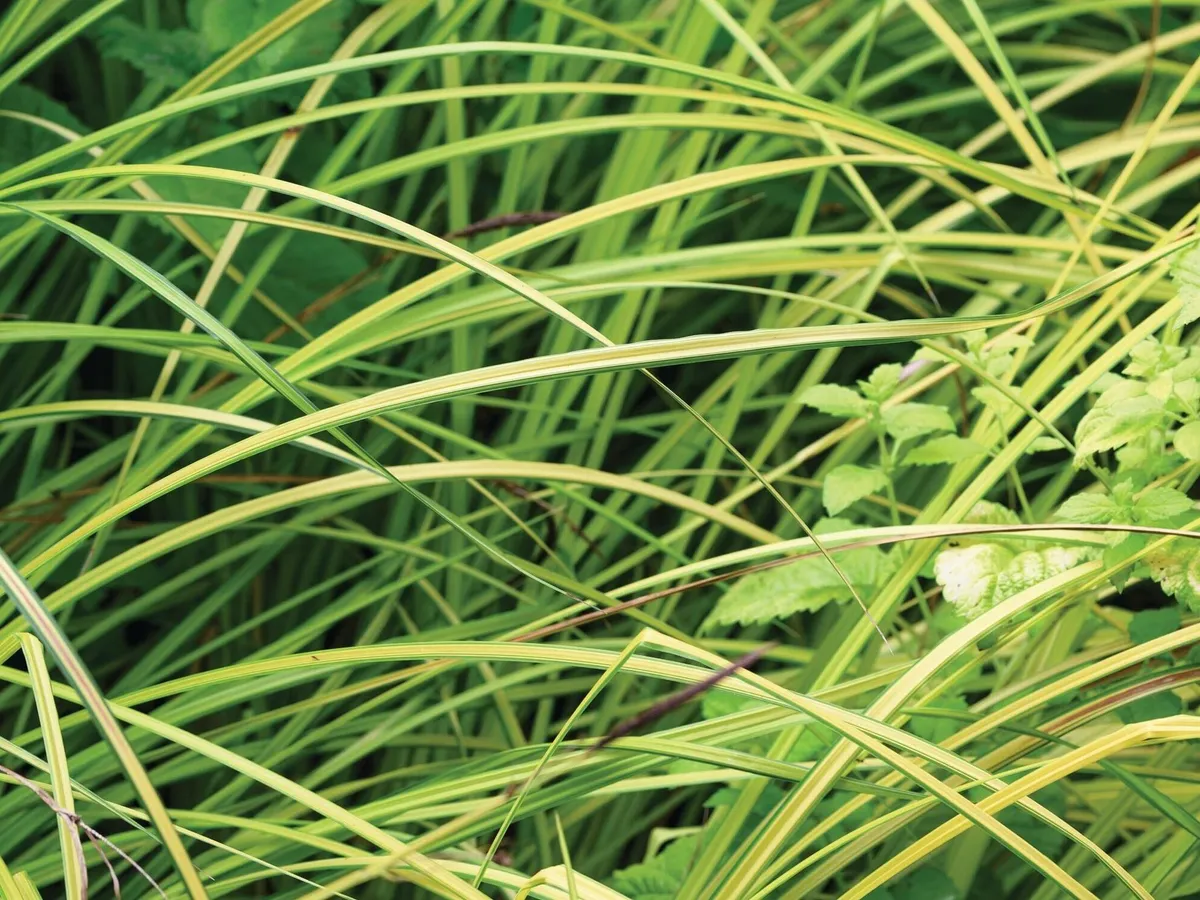
Forms clumps of evergreen, chartreuse foliage and thrives in wet soils in full sun or part shade. This sedge can be planted in lightly shaded areas near ponds and streams. 70cm x 50cm.
Carex remota

Another evergreen species that is native to the UK. This sedge thrives in constantly moist soils in wet meadows, ditches and water margins. It forms lovely mounds of fine, bright-green leaves. 30-50cm x 50cm.
Carex in brief: a fact file
- What A genus consisting of more than 2,000 species of shade-tolerant, often tufted, clumping and mounding grass-like perennial plants. Commonly known as sedges.
- Season Year-round for evergreen species. Spring to autumn and winter for deciduous species. Size Depending on the cultivar and species, generally low to medium-sized plants, typically from 20cm up to around 1m.
- Conditions Considerable variation from species to species, sunny to shady and dry to wet soils. Most species thrive best in moist to average soil conditions. Origins Native to every continent. Many of those in cultivation are native to North America, Asia and Europe.
- Hardiness Generally hardy in the UK and mainland Europe with RHS hardiness ratings that vary from H4 to H6. Most are suitable for gardens in USDA zones 4a to 9b.
Where to see and buy Carex
- Beth Chatto Plants & Gardens Elmstead Market, Colchester, Essex
CO7 7DB. Tel 01206 822007, bethchatto.co.uk - Bluebell Arboretum & Nursery Annwell Lane, Smisby, Ashby de la
Zouch, Derbyshire LE65 2TA. Tel 01530 413700, bluebellnursery.com - Burncoose Nurseries Gwennap, Redruth, Cornwall TR16 6BJ.
Tel 01209 860316, burncoose.co.uk - Kelways Plants Picts Hill, Langport, Somerset TA10 9EZ.
Tel 01458 250521, kelways.co.uk - Knoll Gardens Knoll House, Stapehill Road, Wimborne Minster,
Dorset BH21 7ND. Tel 01202 873931, knollgardens.co.uk




